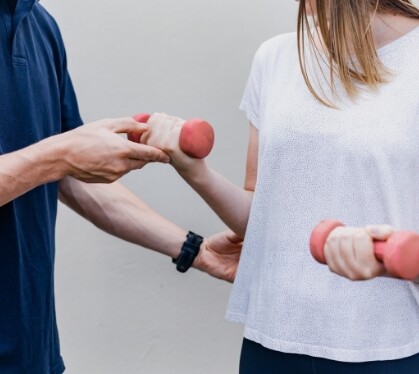Hand Trauma
Hand Surgery - Adelaide Orthopaedic Specialists
Work-related hand injuries are the most common type of work injury in Australia. Every year, around 8,400 Australians are admitted to hospital due to hand injuries, the most severe being crushed or severed fingers or thumb (digits).
Adelaide Shoulder and Upper Limb Clinic’s focus is to provide the appropriate treatment to restore function, relieve pain and regain mobility. Our surgeons use minimally invasive methods wherever possible to achieve the most favourable outcomes when dealing with hand trauma.
Repairing crushed fingers or thumbs
The type of hand trauma surgery required for a crushed hand depends on the type of damage and its severity. Surgical repairs for fractures, nerve or artery injuries, or tendon injuries are commonly needed for moderate to severe hand injuries.
These surgeries are preferably performed within 24 hours of the injury, as early surgery is associated with better outcomes.
Reattaching severed fingers or thumbs
Replantation refers to the surgical reattachment of a body part (such a finger or thumb) that has been severed from the body. Replantation surgery aims to reattach the injured part and restore as much function to it as possible.
In fingers or thumbs that have been crushed, sometimes replantation isn’t possible. In these cases the missing body part is normally shortened.
What happens during a hand repair procedure?
Typically surgery for a hand crush injuries or a severed digit involves removing damaged tissue and repairing any nerves or tendons that have been impacted. In replantation, bone ends are trimmed before they are rejoined.
Muscles, tendons, arteries and nerves are stitched together where possible. Uncovered joints, tendons or nerves may be covered by a piece of tissue removed from another part of the body and transferred to the injured area.
Recovery after hand surgery
Recovery largely depends on the extent of your injury and surgery required, as well as the regrowth rate of sensory and motor nerves.
Sensory nerves carry messages to the brain to signal pain, pressure and temperature. Motor nerves carry messages between the brain and muscles to create movement. As nerves grow about 2 centimetres each month, a good indicator of recovery time is the length of the injury itself.
Rehabilitation after hand or finger surgery
Complete healing of the surgical wound and the injury itself is only the beginning of the rehabilitation process.
Physical therapy and temporary bracing are used to protect and strengthen the damaged tendons and prevent scar tissue from building up. Adelaide Shoulder and Upper Limb Clinic offers a detailed exercise regime as part of the patients’ recovery process.
Filing a WorkCover claim for your hand injury If you are injured at work, a Return-To-Work representative will oversee the management of your injury.
The process for reporting your injury and making a WorkCover claim differs slightly in each Australian state, so visit your state’s Return-To-Work (WorkCover) ‘making a claim’ webpage to make sure you are following the right procedure according to your state’s legislative requirements.

Returning to work after a hand or finger repair
Getting back to work promotes a quicker recovery and is generally more therapeutic than recovering at home. Return-To-Work liaises with you, your employer, Adelaide Shoulder and Upper Limb Clinic, and any other people involved in your recovery process, to help achieve a positive return to work as soon as reasonably possible.
Depending on the severity of your injury, you may participate in a return to work program that involves light duties, to begin with, building up to your full capability in your old role or a suitable similar role.
The sooner you start planning your return to work, the better your chances are of a positive outcome. Maintain open and regular communication with WorkCover, ASULC and your employer to ensure a quick and successful return.
Once you have a referral to us...
Book your appointment online here.